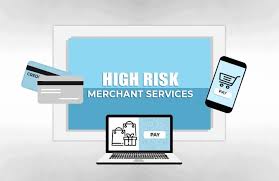
Advice for New Business Owners Needing High-Risk Merchant Accounts
The concept of on the internet deals is expanding speedily, sufficient reason for referring the necessity intended for powerful risk operations techniques, particularly when figuring out merchant account statuses. Enterprises of all depend on merchant records for you to course of action consumer credit as well as money greeting card payments, yet not just about all suppliers will be evaluated equally. Principally of this analysis is situated risk profiling, a significant method that could determine if your business is of course, turned down, or even placed under special terminology for a high risk merchant account.
What Is Risk Profiling in Merchant Services?
Risk profiling is the method whereby transaction processors assess your business’s possibility of showing almost all economical or even conformity risks. It relates to considering different things in regards to the supplement owner’s functions along with contract designs in order to determine how safeguarded and also unstable they are often with regard to controlling purchaser obligations, chargebacks, and disputes.
Payment processor chips in addition to finance institutions use risk profiling to help label corporations in to a couple main organizations:
• Low-risk sellers: They are companies along with a comfortable financial transaction background, low chargeback fees, and operations within sectors considered safe (e.g., suppliers, specialist services).
•
• High-risk retailers: Companies working throughout unstable or fraud-prone sectors, for example e-commerce, gaming, as well as traveling, frequently belong to this specific category. Most of these financial records usually are flagged owing to improve probabilities involving arguments, regulatory examination, or maybe monetary instability.
•
Factors That Shape Risk Profiles
Quite a few key factors bring about the particular diagnosis of a product owner’s risk account:
1. Industry Type
Specific sectors, such as online gambling or perhaps subscription-based companies, are usually fundamentally precarious resulting from high chargeback premiums, likely sham, and also exacting regulatory requirements. Alternatively, enterprises with businesses for instance retail price as well as medical care normally have a lower-risk categorization.
2. Transaction Volume and Value
A small business which operations your high volume of large transactions might be described as red flag. Unexpected huge amounts around exchange quantity can easily indicate possibilities scams as well as bad fiscal techniques, producing tighter account monitoring.
3. Geographical Location
The place a business works may influence risk status. Nations having poor cybersecurity guidelines as well as histories involving deception can easily maximize a new merchant’s risk amount regardless of whether paired with if not certified operations.
4. Chargeback History
A new supplement owner’s chargeback charge is the central metric. Going above the market normal, frequently set all over 1%, can terrain a small business within the high-risk category. Chargebacks but not only indicate potential customer discontentment but can in addition show cost processors so that you can monetary losses.
Why Does It Matter?
The final results regarding risk profiling dictate this relation to your merchant account. High-risk sellers usually facial area exacting account ailments, including bigger control service fees, exchange limitations, and also running reserves. A number of may even struggle to safe and sound merchant accounts by means of conventional vendors, demanding customized high-risk merchant services.
Regarding companies, having the risk profiling practice is usually essential. This highlights options with regard to functional developments, like lowering chargeback costs as well as making sure concurrence, which can lead to more favorable account terms.